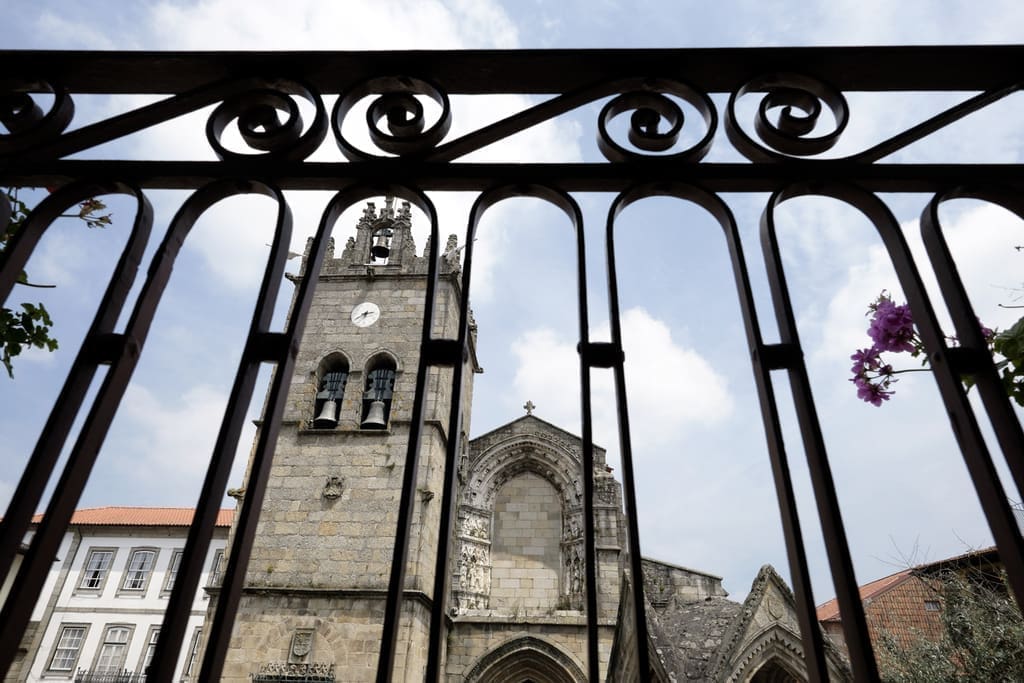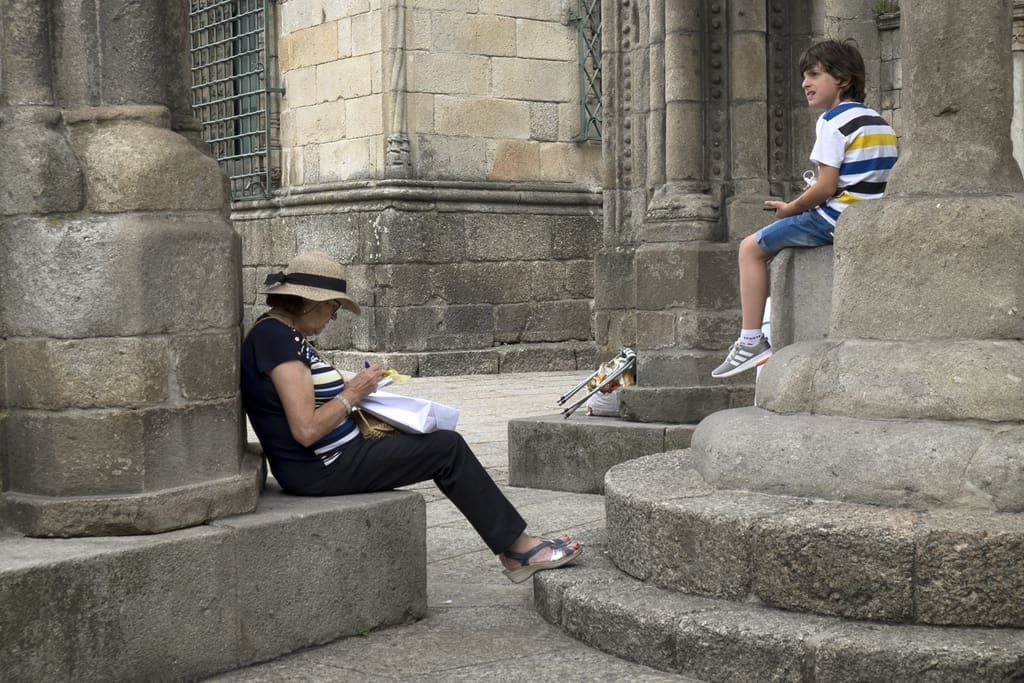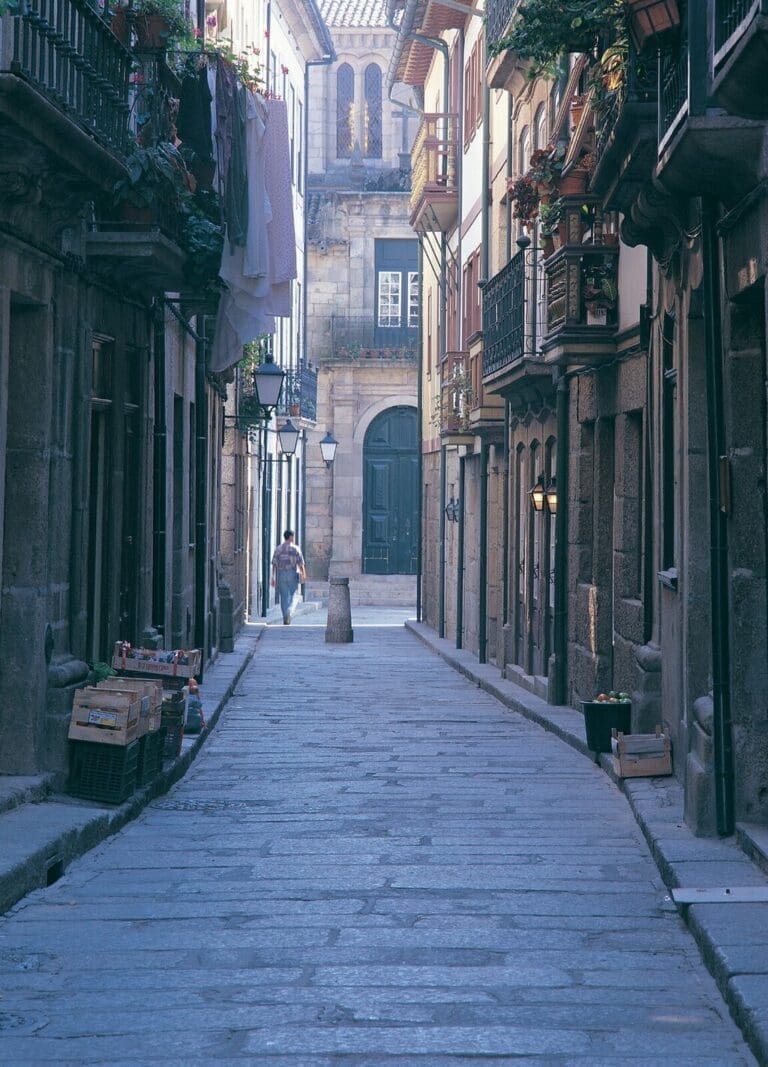The city of Guimarães grew up around the Plaça da Oliveira, formerly known as Praça Maior.
The Collegiate Church of Nossa Senhora da Oliveira is located in the square and has its origins in the monastery created by Countess Mumadona Dias in the first half of the 10th century. It was a double monastery, because it housed monks and nuns, and it was here that the Countess retired in the last days of her life.
The church underwent several conservation and restoration interventions over the centuries, which gave it the configuration we see today. In 1387, in fulfillment of a vow made before the Battle of Aljubarrota, King D. João I completely remodeled the old convent core, investing in the construction of the new church. The work was entrusted to the master João García de Toledo, who designed the building based on models of Gothic architecture. The Church Tower was built later, in the 16th century with decorative features in the Manueline style (King D. Manuel I).
On the right side of the Tower we can see the old alarm system of the Historic Centre, dating from the 19th century. On the lid you can find the engraving of the station numbers, which correspond to a specific area of the city and were generally known by the population.
The box, locked, had inside a handle connected to the bell of the tower, being the responsibility of a single person, and its improper use, or failure to activate it in case of emergency, entailed heavy fines. The bell rang the number corresponding to the station where the emergency occurred, usually fires, which allowed the population to immediately go to the place. The bell only stopped ringing when the emergency was resolved.
We can find other boxes with this functionality, placed on the sides of other churches in the city.
In a corner next to the Tower, facing the Rua de Santa Maria, we see a railing with a small chapel: the Chapel of S. Nicolau, patron saint of the students of Guimarães.
The original chapel of S. Nicolau was built in 1663. In the 1950s, next to the sacristy of the Collegiate Church, there was a large chapel with a granite structure and vault, surrounded by a wide wrought iron railing, an altar carved with the image of the Saint. It was an autonomous chapel, more than 300 years old.
In 1970, in a controversial renovation of the Church, the chapel was dismantled, however, the stones were saved and preserved. In 1998, the Nicolinos, with the help of several entities and the Guimarães City Council, carried out the reconstruction of the Chapel.
The Saint gives his name to the festivities organised by the students of the Guimarães Secondary School – Festas Nicolinas, which take place annually from 29 November to 7 December.
In front of the Church we see a unique monument: the Padrão do Salado. A Gothic porch erected in a very central location. It was built to commemorate the victory obtained by King D. Afonso IV in the Battle of Salado, in 1340.
The Padrão houses a cross in the centre with Christ crucified on one side and Our Lady on the other. The Cruzeiro was offered by Pero Esteves, a businessman from Guimarães who, according to legend, brought it from Normandy. Due to its unique shape and architecture, it is one of the most photographed monuments in Guimarães.

 Guimarães, Northern Portugal
Guimarães, Northern Portugal


















 Guimarães Turismo
Guimarães Turismo 




